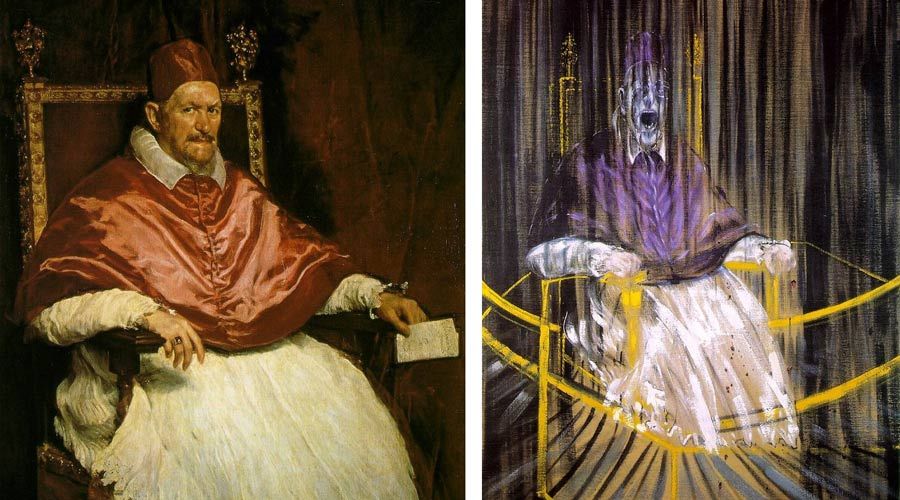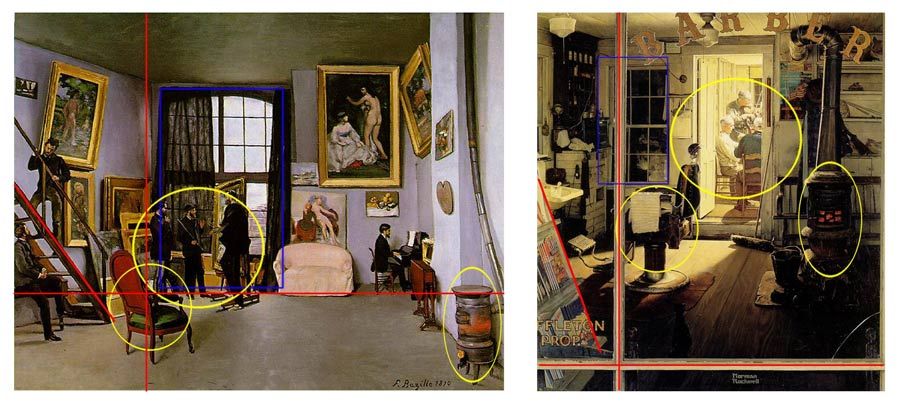Creating Computer Vision and Machine Learning Algorithms That Can Analyze Works of Art
By Ahmed Elgammal, Rutgers University
When you study a painting, chances are that you can make several inferences about it. In addition to understanding the subject matter, for example, you may be able to classify it by period, style, and artist. Could a computer algorithm “understand” a painting well enough to perform these classification tasks as easily as a human being?
My colleagues and I at the Art and Artificial Intelligence Laboratory at Rutgers University explored this question using MATLAB®, Statistics and Machine Learning Toolbox™, and a database of thousands of paintings from the past six centuries. We also addressed two other intriguing questions about the capabilities and limitations of AI algorithms: whether they can identify which paintings have had the greatest influence on later artists, and whether they can measure a painting’s creativity using only its visual features.
Extracting Visual Features for Classifying Paintings
We wanted to develop algorithms capable of classifying large groups of paintings by style (for example, as Cubist, Impressionist, Abstract Expressionist, or Baroque), genre (for example, landscape, portrait, or still life), and artist. One requirement for this classification is the ability to recognize color, composition, texture, perspective, subject matter, and other visual features. A second is the ability to select those visual features that best indicate similarities between paintings.
Working with MATLAB and Image Processing Toolbox™, we developed algorithms to extract the visual features of a painting. The feature extraction algorithm is fairly common in computer vision, and straightforward to implement. The more challenging task was finding the best machine learning techniques. We began by testing support vector machines (SVMs) and other classification algorithms in Statistics and Machine Learning Toolbox to identify visual features that are useful in style classification. In MATLAB, we then applied distance metric learning techniques to weigh the features and thereby improve the algorithm’s ability to classify paintings.
The algorithms we developed classified the styles of paintings in our database with 60% accuracy, where chance performance would have been about 2%. While art historians can perform this task with much more than 60% accuracy, the algorithm outperforms typical non-expert humans.
Using Machine Learning to Uncover Artistic Influences
Once we had algorithms that could reliably identify similarities between pairs of paintings, we were ready to tackle our next challenge: using machine learning to reveal artistic influences. Our hypothesis was that visual features useful for style classification (a supervised learning problem) could also be used to determine influences (an unsupervised problem).
Art historians develop theories of artistic influence based on how the artists worked, traveled, or trained with contemporaries. Our MATLAB based machine learning algorithms used only visual elements and dates of composition. We hypothesized that an algorithm that took into account objects and symbols in the painting would be more effective than one that relied on low-level features such as color and texture. With this in mind, we used classification algorithms that were trained on Google images to identify specific objects.
We tested the algorithms on more than 1700 paintings from 66 different artists working over a span of 550 years. The algorithm readily identified the influence of Diego Velazquez's “Portrait of Pope Innocent X” on Francis Bacon's “Study After Velazquez's Portrait of Pope Innocent X” (Figure 1).
The similarities in composition and subject matter between these two paintings are easy even for a layman to spot, but the algorithm also produced results that surprised the art historians we worked with. For example, our algorithm identified “Bazille’s Studio; 9 rue de la Condamine,” painted by French Impressionist Frederic Bazille in 1870, as a possible influence on Norman Rockwell’s “Shuffleton’s Barbershop,” completed 80 years later (Figure 2). Although the paintings might not look similar at first glance, a closer examination reveals similarities in composition and subject matter, including the heaters in the lower right of each work, the group of three men in the center, and the chairs and triangular spaces in the lower left.
In our data set, the algorithms correctly identified 60% of the 55 influences recognized by art historians, suggesting that visual similarity alone provides sufficient information for algorithms (and possibly for humans) to determine many influences.
Measuring Creativity by Solving a Network Centrality Problem
Recently, our research has focused on developing algorithms to measure creativity in art. We based this project on a widely used definition that identifies an object as creative if it is both novel and influential. In these terms, a creative painting will be unlike the paintings that came before it (novel), but similar to those that came after it (influential).
In addressing this problem, we once again saw an opportunity to apply our MATLAB algorithms for identifying similarities between paintings. In MATLAB, we created a network in which the vertices are paintings and each edge represents the similarity between the two paintings at its vertices. Through a series of transformations on this network we saw that making inferences about creativity from such a graph is a network centrality problem, which can be solved efficiently using MATLAB.
We tested our creativity algorithms on two data sets containing more than 62,000 paintings. The algorithm gave high scores to several works recognized by art historians as both novel and influential, including some of the works shown in Figure 3. Ranking even higher than Pablo Picasso’s “Young Ladies of Avignon” (1907) in the same period were several paintings by Kazimir Malevich. This result initially surprised me, as I knew little about Malevich’s work. I have since learned that he was the founder of the Suprematism movement, one of the earliest developments in abstract art.
To perform a basic validation of our algorithm, we changed the date on specific works of art, effectively shifting them backwards or forwards in time. In these “time machine” experiments, we saw significant creativity score increases for Impressionist art moved back to the 1600s and significant reductions for Baroque paintings moved forward to the 1900s. The algorithms correctly perceived that what was creative 300 years ago is not creative today, and that something that is creative now would have been much more creative if introduced far in the past.
A Scalable and Extensible Framework for Ongoing Research in the Arts
Humans have the innate perceptual skills to classify art, and they excel at identifying similarities in pairs of paintings, but they lack the time and patience to apply these skills objectively to thousands or millions of paintings. Handling tasks at this scale is where computers come into their own. By developing machine learning algorithms that have perceptual capabilities similar to humans, our goal is to provide art historians with tools to navigate vast databases of images.
The framework we developed in MATLAB for identifying similarities and measuring creativity is not confined to art. It could be applied to literature, music, or virtually any other creative domain, as long as the individual works can be encoded in a way that is accessible to the algorithms.
For now, however, our focus remains on the visual arts. We are interested not only in ensuring that machine learning algorithms produce good results but also in how they arrive at those results. In this area, too, MATLAB is a tremendous advantage because it provides many ways to quickly and easily visualize results. These visualizations enable us to understand the results and use them to inform ongoing AI research.
Published 2016 - 92967v00


